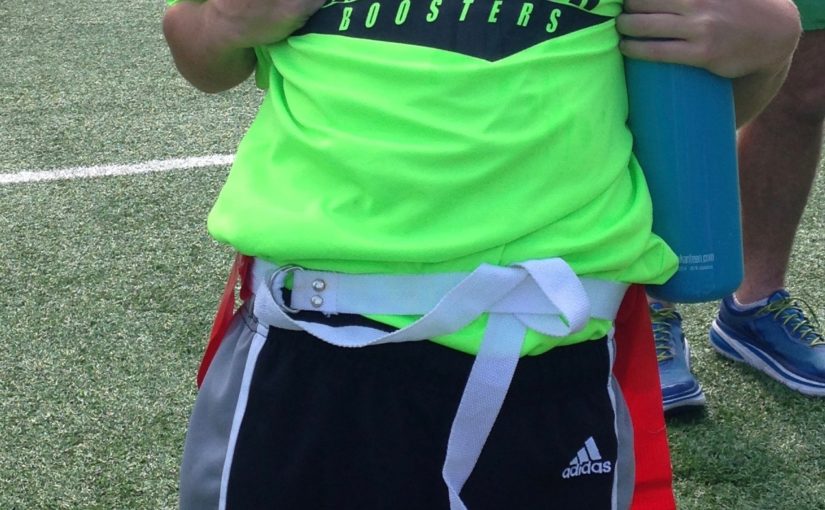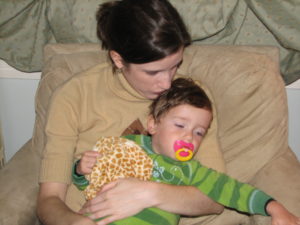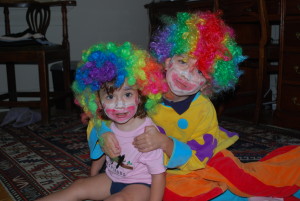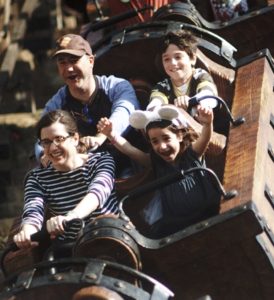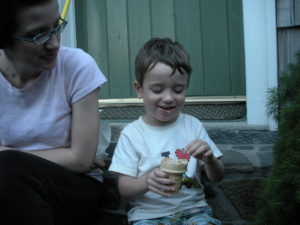Using the A-word would have robbed James of a rare, pure victory. In my defense, most of my parenting mistakes come with the best of intentions.
Author: lwadams
I Worried That My Son’s Teacher Didn’t See Him As A Boy With Autism
Instead of making her a better teacher for autistic kids, instead of making me a better autism translator, fourth grade made James a better student.
NAUGHTY OR NICE, WE’RE YOUR FAMILY
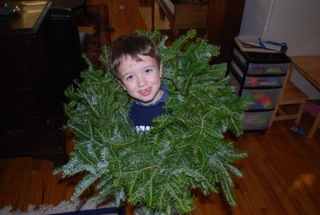
If this holiday get-together is a chance to showcase my children, to enter them in a competition for best all-around kid in the family, I forfeit.
Soothing The New School Year Anxiety
Just as warnings aren’t enough for some kids, reassurances aren’t either. Gambling offers a middle ground between hovering and hands-off.
The Parenting Regret That Caught Me By Surprise
The pacifier was a sign of weakness, of immaturity, of difference…. James was attending a regular pre-Kindergarten, and I thought he needed to look like a regular pre-Kindergartner. Even in bed.
I took away my son’s pacifier when he was four years old, and I still regret it.
It seemed like the perfect time. We’d just watched Toy Story 3, in which Andy sorts through his childhood belongings before heading to college. He decides to store the important ones, including Buzz Lightyear, in the attic.
My son James, who has autism, took an interest in our attic. What was up there? What could we put up there?
I jumped at the chance. From his toddler years, I’d done my best to restrict the pacifier to his bed. I was a child psychologist. The very thought of running into one of my patients around town, pacifier-sucking behemoth in tow, made me want to hide my head.
Plus, everything I’d read cautioned about pacifier use once kids started getting their permanent teeth.
The pacifier was a sign of weakness, of immaturity, of difference. I knew James had some developmental delays, but when James was four the idea that he had autism was relatively new. James was attending a regular pre-Kindergarten, and I thought he needed to look like a regular pre-Kindergartner. Even in bed.
So James and I packed his few remaining pacifiers into a Ziploc bag and made a trip up to the attic. “Where do we put them?” he asked, looking around at the vast, dusty, hot, mostly empty space.
I suggested a ledge near the attic entrance, “so we can visit.” He set them down, gave them a little pat, and said, “Bye, passes.” He climbed down the attic stairs and headed to the playroom, seeming none the worse for wear.
James never asked for his pacifier again, but that didn’t mean he didn’t miss it. Like lots of kids with autism, he had uneven language development. At that point, he’d still never told me he was hungry, never told me he was thirsty. Even though he could give the proper technical name for any construction truck he might spot around town.
When he had a strong need he’d have a tantrum, and I’d have to figure it out.
I have a family history of premature pacifier disposal. My older brother loved his pacifier, but my mother decided he needed to give it up at barely age two. A friend suggested she take my brother to the zoo and feed it to the baby raccoons, reasoning that they needed it more than he did. My brother had nightmares about the baby raccoons for months afterward.
I knew all about the raccoons. Letting James use a pacifier for two extra years was my way of learning from my mother’s mistake. If I’d known then what I know now, I’d have let him keep it as long as he wanted and use it whenever and wherever he wanted.
The pacifier wasn’t a problem, but a solution.
Looking back through home movies recently, I confirmed something: James’ younger sister started sucking her fingers before she was an hour old.
“Wow, look at her,” I say in the video. “So strong.” Seeing the video reminded me of how competent infants can be.
I saw an infant at a Mardi Gras parade, which is not at all unusual or frowned upon here in New Orleans. The baby girl rubbed her forehead against her mother’s chest in the Baby Bjorn, soothing herself to sleep as the marching bands blared. It was 1:00, after all. Naptime.
That kind of self-regulation is so hard for people with autism. So hard for James. James used the pacifier in his bed, to help him cope with the stress of being tired and of being alone in his room. With all that was going wrong with James, that led to his autism diagnosis, his self-soothing with the pacifier was something right.
What’s two extra years? If James had done as his sister did with her fingers, kept sucking his pacifier for comfort until age six, then given it up on his own, the whole thing would’ve been a success story for James. I shouldn’t have butted in.
I’ve developed a rule of thumb. It started with my acceptance of James’ autism and my own limitations in coping with it, even though autism was my specialty for ten years before his birth.
My first choice is always to find what James is doing right, and bolster that. Tackling a problem – which might exist only in my mind – is always the last resort.
9 Things I Didn’t Realize I Had To Clean Until I Had Kids
If you don’t have kids and you’re still reading, don’t be tempted to use this list as birth control. It might have worked for me back in the day, but I can’t get up to irrigate the toilet hinges without pointing out one last thing.
Navigating Disney World With Autism Spectrum Disorder
Most people are beginning to understand that Autism Spectrum Disorder means different things for different people. What’s less commonly understood is that it means different things for the same person at different times.
This year my husband insisted on a trip to Disneyworld. I’d resisted because our nine year old, James, has Autism Spectrum Disorder. James can blend in with his non-autistic classmates, but this was Disney: three solid days of overstimulation, temptation, distraction, and surprises.
James is only one member of our four-person family. We also have a seven-year-old princess. I mean daughter.
I visited an easy-to-find section of Disney’s website: Services for Guests with Cognitive Disabilities, “including those on the Autism Spectrum.” Inside was a chart with sensory details on each ride: smells, bumps, sounds, flashing lights, periods of darkness. There were videos to help kids prepare, and lists of what to bring, such as headphones, earplugs, or a favorite toy. There were maps to special “break areas,” where people could go if they were overstimulated.
All the basics that most people with autism need.
The tricky part is, James is like most people with autism, in that he’s not like most people with autism. Autism features a wide range of presentations, from severely developmentally delayed people who can’t speak, to college-educated professionals. So each person’s needs are highly specific.
James didn’t need a sensory guide. When it comes to roller coasters, the louder, the flashier, the bumpier, the better. But crowds? Unfamiliar foods? Unexpected closures? Far-away restrooms? Any of these, and especially these in combination, could ruin the trip.
Exhaustive preparation is always my best defense. Disney offers Fast Passes for free to all visitors, not just those with disabilities. They were all we needed (beyond advance dinner reservations and a restriction on overdoing it) for our first two days in the Magic Kingdom. A Fast Pass gives you a generous time window during which to report for a ride, and admits you to a fast-moving line once you show up.
Our first day, we had a hint about what was to come. We hit Big Thunder Mountain Railroad, our second planned ride, about 45 minutes ahead of our Fast Pass. I decided we’d wait in the regular line, which looked short to me.
Well, actually James decided. I wanted to use our Disability Access Pass, which we’d obtained within our first 15 minutes at the Magic Kingdom. It would have functioned like a Fast Pass, sparing us some time in line but not swooping us to the front.
“I understand,” the young woman at the desk had murmured before the second half of “High Functioning Autism Spectrum Disorder” was out of my mouth. Then she asked to take James’ picture.
“Mom,” James whined, looking around us. When I’d first mentioned the pass to him, he’d put his foot down. “Disability Pass? No. I don’t need special treatment.”
Cool kid, right?
Before I was James’ mother I was a child psychologist specializing in Autism Spectrum Disorders. I follow my own advice, even though being the mom is nothing like being the psychologist. Instead of supporting James in his attempt to tough it out, I made him get the Disability Access Pass, which afterward he referred to as the Autism Pass.
Any little bit could help.
Back to Big Thunder Mountain. Disney lines snake around, so that you can’t tell you’re near the front until just before you hop on the ride. At precisely the 30-minute mark, James abruptly stepped within a millimeter of the young woman in front of him and growled, “I hate this person. I’m going to push her.”
He didn’t push her. He never planned to. This was just his way of saying he’d had enough waiting. Unfortunately, I could tell by the young woman’s face that he didn’t look at all autistic to her.
He looked like a brat.
Later, I asked James what he would rather be: A brat, or a person with autism?
“I just hated that girl. She was in my way.”
I explained and explained, but in the end he agreed only to this: 30 minutes in line was his limit. Beyond that, we would use the Autism Pass.
Bystanders are beginning to understand that Autism Spectrum Disorder means different things for different people. What’s less understood is that it means different things for the same person at different times.
Hopping out of the front car of Space Mountain, high-fiving his dad and exclaiming, “That was awesome!” James looks like a typical nine year old. But tack on a few discomforts and uncertainties, and suddenly he’s scratching gashes into his own forearms and yelling, “Put me up for adoption!”
I’d do anything to prevent one of these rare outbursts. As she arranged our Disability Access Pass, the young woman had asked, “Is there anything else I can do for you?”
I said no, because I didn’t know where to start. At the end of our trip, I tallied up a wish list:
- A private taxi from our hotel room’s door to the front of the park.
- The cell phone number of the taxi driver so we could escape at a moment’s notice.
- Immediate service at any restaurant offering plain hamburgers, hot dogs, or cheese pizza.
- Immediate restroom access within 100 feet of any ride.
- For all gift shops to hide their Star Wars action figures, until such time as we were ready to make a purchase.
- A magic pod that would transport us swiftly through a crowd of any size, so that we wouldn’t have to dodge people as we walked.
Recall that James doesn’t want to draw attention to himself, and it’s an impossible situation.
I wanted that magic pod, and I wanted it to be invisible, too.
Like Disney proved in their guide, I know what’s likely to trigger my child with autism. I zero in on these triggers and try to snuff them out completely in the name of family fun.
But spontaneity is also part of the fun. By the third day, even as James’ stress level increased, we both appreciated the pop-up parade, the roaming Tigger, the Mickey-shaped waffle. We’d have missed all that if I’d fulfilled my list.
I Thought I Knew Everything About Autism — Until It Hit My Own Son
As others reveled in my son’s eccentricities and marveled at his strengths, I dwelled on his differences.
8 Things You Need To Know Before Giving Your Child Psychiatric Medication
8 Things You Need to Know Before Giving Your Child Psychiatric Medication
Medication has been an important part of the complex process of taking care of my son. I credit one psychiatric medication with getting him out of his bed and into the kind of mischief you’d expect from a 4-year-old, like appearing on top of the refrigerator. I blame another medication for temporarily turning him into a dozing Eeyore.
http://www.goodhousekeeping.com/life/parenting/a38719/putting-my-son-on-psych-meds/
Not Even Being a Child Psychologist Prepared Me for a Child with Autism
I worked so hard to get parents to see their child’s perspective. The child’s anxiety had become unbearable, and the parent needed to bear part of that burden with patience.
What I couldn’t fully see until it happened to me, was the larger burden placed on the parents.
